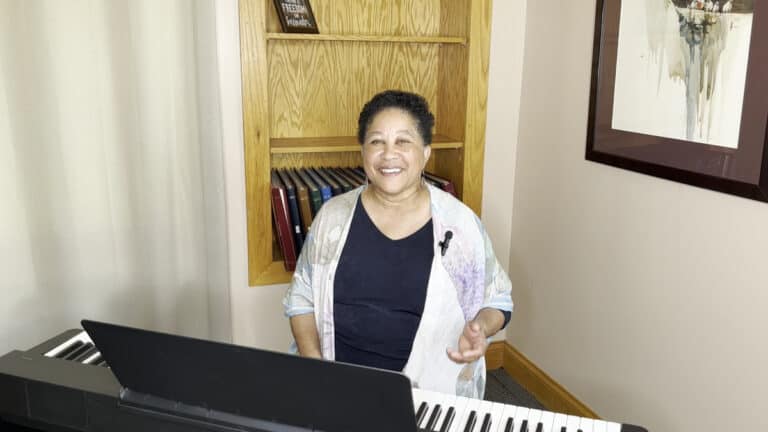Many people who live in states with four seasons look forward to the ability to get out into the garden when the weather finally warms up. Spring garden tending includes planting seeds and bulbs, removing weeds, and dealing with diseased trees or shrubs, plus mulching, cutting, and trimming.
My husband handles all of that for our home landscape, but I handle a similar process each spring at church when I review our parish music repertoire. With a well-honed process, I get into the weeds of the music we’ve used in the previous year.
The intent is to note what’s working and what needs to be cut out or cut back. It also helps us see where gaps exist in our parish music repertoire. That way, we can consider songs, artists, or styles that might address those needs, especially when we are exposed to new music at the CLEF Summer Program or other music gatherings. These are the general steps in our process, though there are many ways to approach pruning your parish music repertoire.
Check your music inventory
At our parish, we have an inventory of our music resources, including sheet music and digital downloads we own. This is the time to update and check that inventory by calling in any wayward music from the choir or ensemble and refiling the music where it belongs, which can be a great job for volunteers from your group.
The companion to that more detailed inventory is a parish repertoire index — a simple document that lists the songs by liturgical usage (gathering, preparation/prelude, Communion, sending, psalms, Mass settings, and miscellaneous service music). The index also includes seasonal songs (Advent, Christmas, Lent, Holy Week, Easter, Pentecost) and a few topical collections. Two such collections are Mary and Holy Spirit, and we also have one for cross songs since it’s an important part of our identity as Holy Cross Catholic Church.
An alternate approach to the index is to simply list all music alphabetically by title, but the liturgical/seasonal route is more insightful for us when we look at how and when we’ve used music. It also may make more sense to look at usage within the frame of a single liturgical year, but late spring or early summer is when we have time and opportunity for planning.
Analyze what songs were used and when
With the index in hand, I go through our planning schedules starting with the previous summer and note when a song was used (S=Summer Ordinary; F=Fall Ordinary; A=Advent; C=Christmas; W=Winter Ordinary; L=Lent; HW=Holy Week; E=Easter). I also color code if the song is new or newer to the parish since it can take years for a song to sink into the bones of a community. It’s not an insignificant amount of work, but it’s worth the time investment. Once you have the index in place for your parish, this part of an annual review is a few hours of focused effort.
Look for insights to aid future planning
Once I’ve reviewed and analyzed what got used when, it’s time to look for insights from the usage. A few examples:
- What gathering songs did we miss altogether? Is it because they’re tired or not aligned with the Scripture cycle, or do we have too many songs?
- Where do we have gaps? Not just topically, but also in terms of representation among styles of music and, more importantly, diversity of composers.
- Among the songs we used in the previous year, are there any that the assembly struggled with in terms of difficulty or engagement?
Sharing insights and discussing gaps is something I do with my colleague in music leadership and a trusted group of musicians from the parish. We also incorporate feedback from liturgy evaluations we do throughout the year as a regular part of our parish liturgy planning meetings.
Refresh your parish music repertoire
The result of this annual process is a good sense of what we need as we look to plan for the upcoming liturgical year that begins with Advent. The expanse of summer and fall Ordinary Time gives us opportunity to try out new music choices with the choir or ensemble, plant it with the community, and let it bear fruit in faith.
If your music ministry doesn’t currently do an annual review of your parish music repertoire, consider planning some time soon to do so. Even if you don’t yet have an inventory of your music and an index of songs by liturgical use, season, or theme, taking some time to step back and analyze the music you’ve used in the past year can help you make better decisions as you plan for the liturgical year ahead.
Kathy Felong is a lifelong pastoral musician and leads the ensemble at Holy Cross Catholic Church in Fairview, Pennsylvania, where she serves as director of liturgy.
Copyright © 2023 Catholic Liturgical Ensemble Formation.



